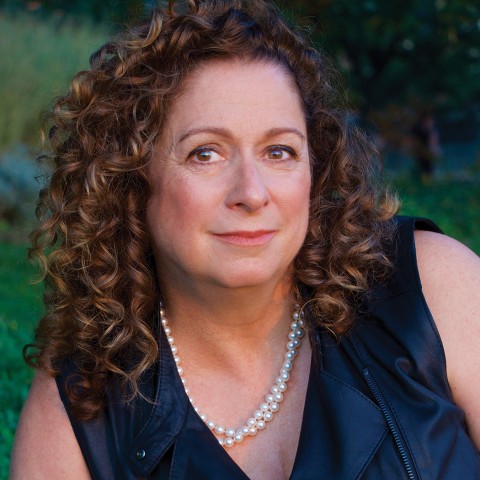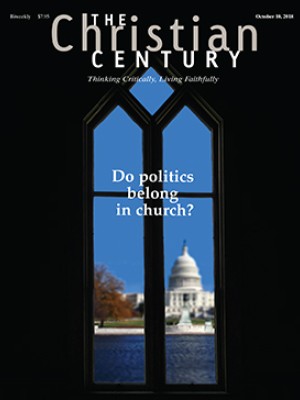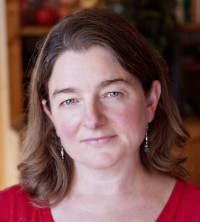A filmmaker turns up the volume on peacemaking work
“Peace is not resting. Peace is loud.”

Activist and philanthropist Abigail Disney has made several documentary films, including Pray the Devil Back to Hell, about the critical role played by Leymah Gbowee and other women activists in resolving the civil war in Liberia in the early 2000s. Disney won an Emmy in 2017 for The Armor of Light, which follows Rob Schenck, a pro-life activist, and Lucy McBath, a mother who lost her son to gun violence, as together they challenge Florida’s “stand your ground” gun laws. Disney, who is related to film producer Walt Disney, founded Peace Is Loud to develop media and events that foster a “culture of peace.”
How did you become a filmmaker?
I came to filmmaking through community activism. I noticed over and over again that it was women who looked around, saw something that needed to be done, and stepped in with courage and tenacity. I met a woman who was working with women in conflict zones around the world, and she invited me to go to Liberia, which had been through years of brutal civil war. The stories I heard from women in Liberia were so horrible and cruel and sadistic that I sometimes had to lie down; I couldn’t handle it.
Read our latest issue or browse back issues.
Embedded in those stories were little glimmers of something else. It was as if the women were leaving little notes in the midst of their stories of atrocity for me to pick up. They would say things like, “When we were all out in the field in our white clothes praying for peace . . .” I started picking up these details and stringing them together. I thought: this must be what women’s history looks like right before it disappears. It must come orally, in fragments, before it submerges. I recognized then that something was being asked of me as someone who could access the world of filmmaking. And I started making Pray the Devil Back to Hell.
How did you find footage for this film?
It was very difficult. I met a British man who said he knew there was CNN footage of the women involved in the peace movement. We watched hundreds of hours of archival footage looking for scenes of the women. There was lots of footage of people shooting each other. There was footage of women weeping, women recovering from rape, women who had been shot—but none of women who were not victims. The footage tells us that there is great affection for war among the people who film it.
Three sources became important. One was the wife of the ambassador to Liberia. At a cocktail party, she said, “I went to see the women in the field protesting. I brought my camera.” At another party, another woman told me that the presidential videographer had just been fired. The national archives had been buried because he was afraid that he was going to be killed for what he had taken footage of. He had video of President Charles Taylor meeting with 2,500 women. The third source was an NGO in Ghana connected with the NGO that organized the peace marchers. It had sent a camera person to the peace talks. God was smiling on us, because of the 90 minutes on that tape, only two minutes were usable, but those two minutes were of the confrontation between Leymah Gbowee and security guards.
What impact did the film have?
I started to get invitations to show the film. The first invitation came from Srebrenica in Bosnia, where there had been a horrible massacre of Muslims. I went there without any sense of what the film would mean to people there. About 50 Muslim women and 50 Serbian women watched the film together. There were a lot of tears; there was some re-traumatizing. It took a while for them to put themselves back together. Then they started talking about how they recognized themselves in the film. About ten minutes in, a woman stood up and said, “That’s what they did in Liberia. What are we going to do here today?”
What did you learn from these events?
I met women who called themselves peacebuilders. I thought it was strange that this word was shared all over the world by women, but I almost never heard it in the United States. One day, I was talking about peacebuilding in Monterrey, in northern Mexico, a place where the rate of femicide, rape, and gang activity is startling and is fueled by the quarter of a million weapons that move to Mexico from Texas and other states on the border. I was aware of this, and yet there I was talking about peacebuilding. The question hit me: I was a citizen of the most belligerent democracy in the history of the world, and I thought I had something to say about peace? I had never acted to build peace in my own country.
What did you do about it?
I asked myself what I could do to build a culture of peace. Addressing the worship of weapons struck me as a place to begin. I decided the place where this worship of weapons is most inconsistent is in the Christian tradition, specifically among evangelicals who speak about the sanctity of life. I thought, “If I could just go to evangelicals, among whom I know no one, with a willingness to talk, would there be a way to talk about the sanctity of every human life and the worship of weapons?”
I found a minister named Rob Schenck who was active in the pro-life movement. I said to him, “I wonder if, instead of fighting, we could explore what common ground we have.” The first time we met we talked for two hours. He had come from a liberal family and grown more conservative in his adult life. I had come from a conservative family and grown more liberal in my adult life. “We are both bilingual!” I said. I was surprised by how smart, well-read, and friendly he was. I am ashamed of that now because he has become one of my closest friends.
What did you talk about politically?
I talked to him about “stand your ground” laws and said that from the time of the Magna Carta, people have had the right to self-defense. What the stand your ground laws changed was the obligation to retreat from conflict before it comes to using lethal force. To me, that sounds like a radical restatement of our values. But 38 state legislatures have in effect now declared that the worst possible outcome of a confrontation is not a corpse. The worst possible outcome is the loss of someone’s pride or stereo.
I believe there are very few people who act with intentional evil. But I do believe there is one bad actor in this equation, and that is the NRA. It has lowered every barrier to taking human life by increasing the number of guns in the country, by encouraging more people to have them, by discouraging any kind of checks or hesitation in gun ownership, and by hoping to force states that do have gun control laws to accept conceal carry permits from other states, despite its stated belief in states’ rights. It is now much easier to kill a person and walk away than it has ever been. If every single human life is sacred, then we have a problem.
What did Schenck say?
He said, “I will pray about this.” I called him a week later; he said, “I am still praying.” I called two weeks later; he said, “I am still praying.” I was just about to give up when he said, “I see there is a deep moral failing at the center of my community, and I have to do something about it.” So we started working together. That became the basis of The Armor of Light. We followed Rob as he went from church to church, Sunday to Sunday, and raised this issue with his community.
How did that film change you?
I started an organization called Peace Is Loud. My mother would always say, “I need some peace,” and what she meant was that she needed to retreat to a quiet corner. I want to say that peace is right in the middle of it all. Peace is not waiting. Peace is not resting. Peace is loud. It is a verb. It is something you make and that you care for once you have created it. The women of Liberia never took off those white T-shirts. They have never stopped working for peace. They know that they are always on the razor’s edge of the opposite.
We Americans are far from understanding the need to build a peaceful and just society. All of us need to reimagine ourselves as peacebuilders. Where in your world can you reach out? Who or what might you change if you asked hard questions or challenged some belief that seems obvious?
A version of this article appears in the print edition under the title “Building peace in the thick of it.”







